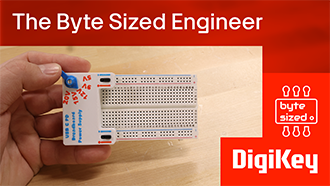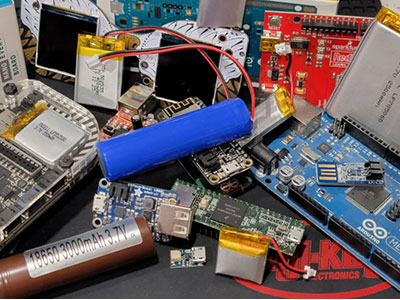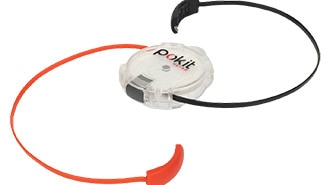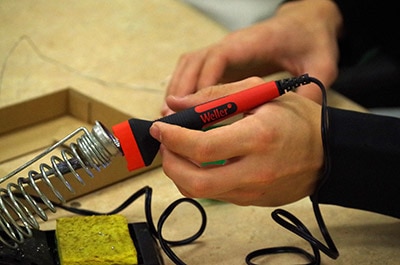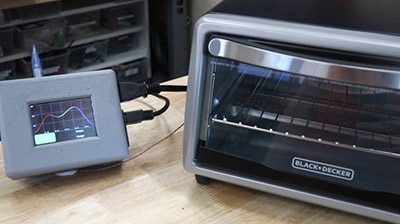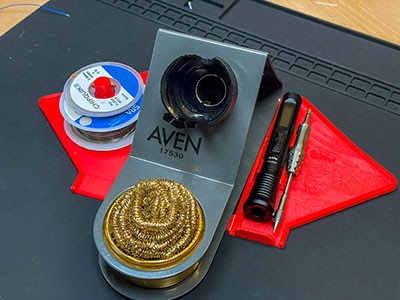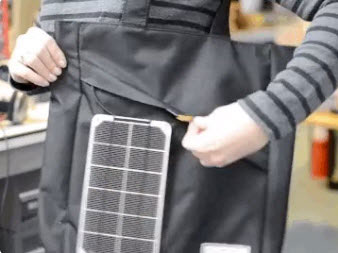No Workbench? No Problem! Make a Portable Soldering Setup
2025-03-18 | By Zach Hipps
License: See Original Project Solder / Desoldering
I love working on big and small projects at my soldering workbench, but let's be honest. Not every project can be brought here. It's no secret that I like working on big things: giant boxing robots, my large-format laser cutter, and even outdoor builds like my Wi-Fi weather station. The problem is that hauling everything back to my workbench just isn't practical. My soldering iron and fume extractor are the two main things that keep me anchored to my workbench. Both are tethered to the wall for power, so how do I cut the cord and go mobile?
The soldering iron problem was easily solved. After a quick DigiKey order, I had an iFixit portable USB-C powered iron in hand. I tested it, approved it, and checked it off the list.
The fume extractor, however, was a different beast. Portable fume extractors apparently don't exist. For me, for electronics work, a fume extractor is non-negotiable. So, naturally, I did what any self-respecting Byte-Sized Engineer would do… I decided to build one. Before diving headfirst into design, I looked at my existing fume extractor. It turns out that it's basically just a computer fan and a carbon filter. Simple enough, right?
First, I needed to find the right fan. My initial digging turned up a 12V fan, but it was too small and definitely not going to cut it. I returned to DigiKey and found a 120mm 12V fan, much closer to the size of my benchtop model. I made sure that the CFM and noise ratings were acceptable for this application. Nice, I can check the fan off the list! Next up: the carbon filter. I did another DigiKey search and found one that perfectly fits the 120mm fan. Filter checked off the list as well. Now, I need to decide how to power it and enclose it all, so it is truly portable.
My first thought was a LiPo battery, but the 3.7V it outputs wouldn't be enough for a 12V fan. I would need to mess with boost converters. No thanks, it's too complicated for this project. Next, I considered a 9V battery. It might spin the fan, albeit slower, but it is worth a shot, right? Out came the soldering iron (back to the workbench…ugh), and I attached a battery clip to the fan, and it worked! It had decent airflow, but the thought of constantly swapping and recharging 9V batteries was just too much. All of a sudden, I had another idea. I grabbed my drill and a battery adapter, which lets you power stuff directly from the drill battery. These batteries are readily available and easy to charge, but there’s a catch. Drill batteries are 18V. Hooking 18V to a 12V fan? Let's just say it created a lot of airflow. (Is anyone else thinking of a mini-hovercraft project?) While impressive, running the fan at 18V long-term isn’t ideal. I’d need a buck converter to step down the voltage to 12V. battery_9
But then, I noticed something on my iFixit portable soldering station. It has two USB-C ports! One for the iron and one…for whatever I want? I grabbed a USB-C cable and a basic USB-C breakout board. When I plugged it in, the fan spun slowly because the USB-C port was only outputting 5V. It turns out that the basic breakout board lacked the power delivery circuitry to request more voltage. Enter the USB-C Power Delivery (PD) breakout board. This little guy lets you select your desired voltage. A quick solder bridge on the 12V pads and I was in business…or maybe not. Back at the workbench (again!), I connected everything together but was still only getting 5V output and a slow fan feed. What was going on? Then, I unplugged the soldering iron, and the fan sped up. Now I was getting 12V! It turns out there's some quirk with the USB-C Power Delivery on the iFixit unit. If you plug in the fan second, it doesn't seem to provide 12V. That’s weird. It is a newer product, so hopefully, they are aware of it and are looking into it. Luckily, the workaround is simple: plug in the fan first, then the iron. That’s good practice, anyway.
With the power sorted, it was time for a case. I fired up my 3D modeling software and got to work. I wanted everything to be one unit integrated with the soldering station. I even snagged a 3D model of the iFixit unit itself, which is cool that they have that available. I modeled the fan housing, complete with a hexagonal grille. Then, I designed a way to attach it seamlessly to the soldering station, incorporating its existing curves. As a bonus, I designed a little brass sponge holder that clips onto one of the accessory knobs on the side since one isn’t included.
After printing all the parts, it was time for the final assembly. Of course, I needed to solder the fan wires to the breakout board, which meant yet another trip to the workbench. (Seriously, how inconvenient is a non-portable soldering station?) Finally, everything came together: the fan, the filter, the case, and the sponge holder. It looked amazing, and it worked! The fan spun at the correct speed, and the soldering iron heated up. I’ll call that a success!
Now, I have a truly portable soldering station, complete with a built-in fume extractor. No more being tethered to the workbench! I'm ready to take my projects on the road. I'm excited to work on my next project with this portable soldering station, a custom macro pad, right here at my…well, wherever I want, actually. The star of this whole show? That USB-C PD breakout board. It made the 12V fan possible. It's a similar chip to the one I used in my USB-C breadboard power supply project. This portable soldering setup is a game-changer—no more excuses for not tackling projects too far from the workbench. Now, the workbench comes to me.
You can find all the files for this project here: https://github.com/bytesizedengineering/portable-fume-extractor












